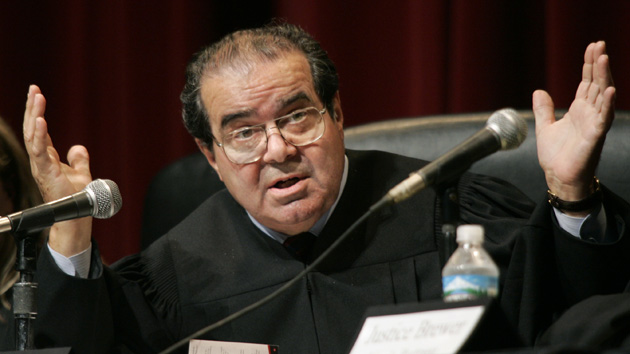Justice Scalia is no stranger to controversy. One of the Supreme Court’s staunchest conservatives, Scalia has often raised the ire of those who disagree with his positions. During the second round of arguments on the Fisher affirmative action case, the conservative icon again courted controversy in his comments on minority students attending higher education. Justice Scalia doesn’t understand higher education as his comments during the hearing showed.

(Full Disclosure: I am a signatory on the Amici Curiae brief by social scientists supporting the University of Texas in the case)
Referring to one of the briefs in the case, Scalia said, “There are those who contend that it does not benefit African Americans to get them into the University of Texas where they do not do well, as opposed to having them go to a less-advanced school, a slower-track school where they do well.”
He continued, “They come from lesser schools where they do no feel that they’re being pushed ahead in classes that are too fast for them.”
Simply put, Scalia is wrong.
Historically black colleges and universities (HBCUs) graduate far more African-American doctors and scientists than their prestige or traditional academic scores might suggest. However, we know these tests are not true measures and HBCUs are identifying students that do well in other ways.
Second, while HBCUs graduate the biggest number of African-American doctors and scientists, this is because they enroll the highest number of African-American students. When you look proportionately, research universities graduate more.
In other words, this is exactly why we need to get more minority students into schools like the University of Texas. If we want to create more minority doctors and scientists, we need more minority students attending selective research universities.
Although the empirical evidence is limited, one can reasonably conclude that HBCUs overproduce because students aren’t faced with some of the challenges and pressures of attending a predominantly white institution (PWI).
At an HBCU, no one looks at an African-American student assuming they are an athlete or asking them to represent their entire race.
Nearly every African-American faces those kinds of questions at PWIs.
The answer, contrary to Fisher’s claims, is continuing to holistically consider race in college admission.
Using race helps create a meaningful level of diversity that helps improve the educational mission of the university.
There are no suitable substitutes for race to support the level of diversity needed on campus.
If colleges are no longer allowed to use race, we will see a decline in the racial and ethnic diversity of higher education.
Contrary to Justice Scalia’s argument, this is bad for all students. For minority students that gain admission in a race-neutral environment, they will face increased isolation.
For white students, they will suffer from limited interactions with students from different backgrounds and being able to benefit from a diverse classroom.
We have mountains of evidence that diversity in the classroom helps students and that considering race as part of admissions is the only way to improve minority participation.
If the Supreme Court follows Justice Scalia’s argument, minority students, white students, and research universities will be suffer.
Justice Scalia is wrong. Fisher is wrong. And those suggesting minority students will do better at “lesser schools” are wrong.
For the sake of my students, I hope the Supreme Court gets it right.

